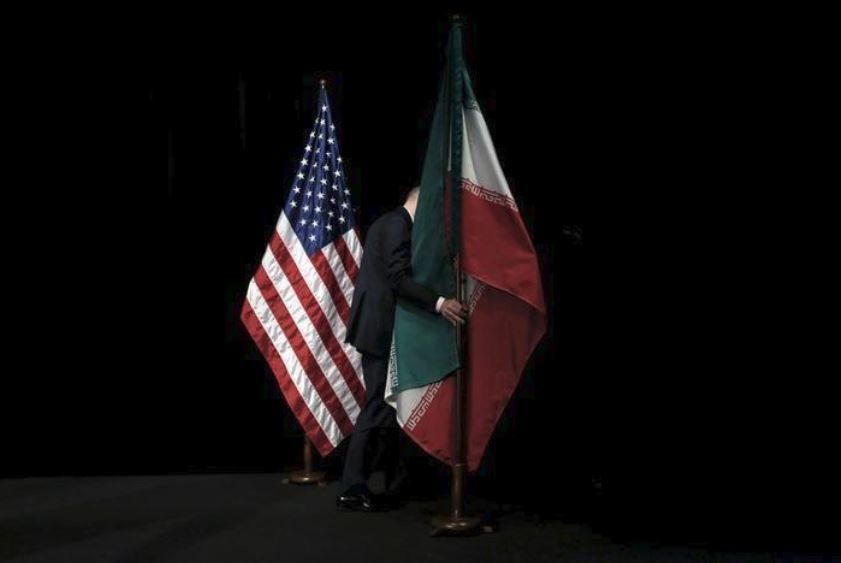By Mehrdad Khonsari
In the current standoff between Iran and the U.S., a U.S. president who shows no sign of being trigger-happy is pitted against a defiant Iranian government that refuses to capitulate. With any kind of inconclusive military engagement likely to further aggravate matters, the time for bilateral talks aimed at reaching a ‘do-able deal’ may be near.
Although U.S. President Donald Trump’s policies may seem incoherent and unpredictable, no one doubts his aversion to getting into another major war in the Middle East, especially in advance of the 2020 election.
A cursory glance at events since the attacks on Saudi oil facilities of September 14 shows that contrary to the bellicose advice previously given by the likes of John Bolton and reflected more recently in Mike Pompeo’s threatening rhetoric against Iran, Trump is himself more inclined to shy away from any kind of a costly and dangerous military escalation, preferring instead to punish Iran by ratcheting up sanctions that are already crushing Iran’s economy.
For its part, Iran has demonstrated that it is a major regional power with the determination and the means to defend its perceived interests, especially in the face of various intrigues on the part of regional competitors who ultimately rely upon the U.S. to do their bidding. Iran has also been quietly absorbing high levels of protracted Israeli air attacks against its assets in Syria, and been robust in its support for the Houthis in Yemen or in defense of its legitimate interests in the waters of the Persian Gulf. Indeed, the attacks carried out against Saudi facilities on September 14 were a poignant reminder to countries like Saudi Arabia and the UAE of the idiom that those who live in glass houses should not throw stones.
Moreover, Iran’s resilience in the face of America’s ‘maximum pressure campaign’ has so far proved wrong those who said that Iran was teetering on the brink of economic and political collapse and only needed a little push to finish the job.
Following events on September 14th, President Trump was no doubt provided with a menu of possible actions, all capable of delivering a mighty blow to Iran. However, it is evident that he is anxious not to draw the U.S. into another protracted, costly and unpredictable war. Such a conflict, in the face of Saudi Arabia’s exposed vulnerabilities (not to mention those of its Gulf Cooperation Council neighbours), would also lay ruin to Crown Prince of Saudi Arabia Mohammad bin Salman bin Abdulaziz Al Saud’s ‘Saudi 2030 Vision,’ and cripple his plans for an Aramco initial public offering (IPO), by driving much needed foreign investment away from his country.
Also, given Iran’s repeated denial of any direct involvement, the fact that Tehran most likely gave the Houthis the means, the training and the encouragement to carry out such an attack, is by itself not a reason for retaliation against Iranian soil. In the past, the U.S. never attacked China or the Soviet Union on the grounds that they had offered similar assistance to the North Vietnamese during the Vietnam War. And in any case, proxy wars, by their very definition, involve outside assistance to all warring factions.
What Next?
It is clear that the current stalemate between Iran and the U.S. cannot continue indefinitely. As a rule, stalemates end either when they escalate into a hot conflict or through the start of some form of dialogue for reaching a compromise. With continued European support for Iran hanging by a thread in the aftermath of September 14, there are signs of reluctance on the part of both countries for allowing matters to get out of control. There is also a clear understanding on both sides that in the final analysis, much to the chagrin of America’s regional allies and their Iranian protégés, there is no other real alternative to direct Iran-U.S. talks in order to reach a broad compromise that can gradually bring 40 years of estrangement to some kind of a conclusion.
Talks between the two parties are something that can realistically happen in a variety of ways. In the course of the recent G7 meeting in Biarritz, the French President Emmanuel Macron spoke of the possibility of talks that might take place in the course of the 74th UN General Assembly between President Trump and President Rouhani. However, in the absence of sufficient confidence building measures required for sustainable dialogue, it may be more appropriate that such talks should be held away from the cameras and behind the scenes until such time as a suitable measure of acceptable agreement between the two sides has been reached.
By displaying a measure of flexibility to facilitate such bilateral talks, the U.S. will help end the current stalemate, while at the same time enhancing the role that must be played by sane and reasonable elements inside Iran, who are striving to lead their country and its people to a different future in the post-Khamenei era.
Dr. Mehrdad Khonsari is a Senior Consultant at the Iranian Centre for Policy Studies (ICPS).


